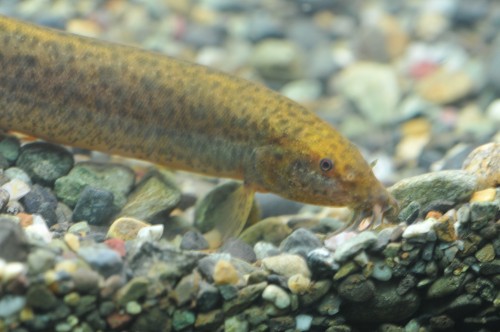Misgurnus anguillicaudatus
Identification Tips:
•Slender and eel-like.
•Colour varies from yellow to olive green, to light brown or grey with lighter undersides.
•Mouth is surrounded by three sets of barbels.
Conservation Status:
| British Columbia | Canada | Natureserve | |
| COSEWIC | Species at Risk Act | ||
| Introduced Species | Not Assessed | None | G5 |
Information Source: BC Conservation Data Centre: http://a100.gov.bc.ca/pub/eswp/
Life History:
•Bottom dwelling scavenger
•Feed on algae, detritus and invertebrates, using the barbels around their mouth to sift through silt or pebbles to find prey.
•May reach 30 cm in length and live more than 15 years.
•Can survive short periods of desiccation by secreting mucous over their body to prevent water loss.
•They can swallow air and absorb oxygen through their gut.
Habitat:
•Found in slow moving rivers and in lakes, ponds, sloughs, and ditches.
•Prefer muddy bottoms.
•Can survive in very poor quality water with low oxygen and high temperature.
Range:
British Columbia
•Introduced to Alouette River in the Fraser Valley where it was first reported in approximately 2005
•Found in other Pitt River tributaries and Coquitlam River in 2017, and in Red Slough at north end of Pitt Lake in 2021
Global
•Eastern Asia from Siberia south to northern Vietnam, and Japan
•Sporadically introduced across North America and to Hawaii
Comments:
•A common aquarium fish and also a food fish in Asia.
––––––
Primary Information Source:
McPhail, J.D. 2007. The Freshwater Fishes of British Columbia. University of Alberta Press. Edmonton, Alberta.


